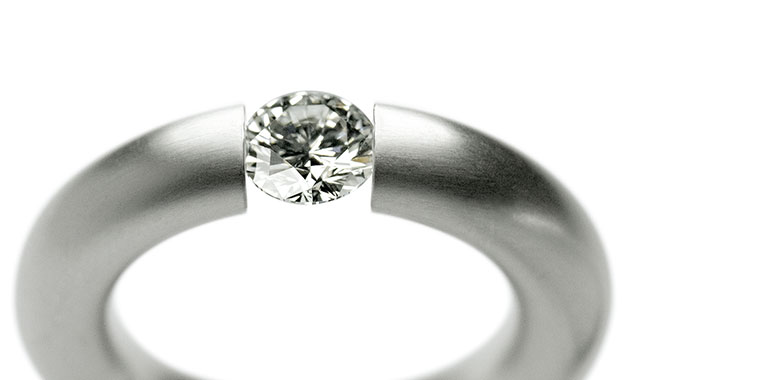
The Spannring, patented in 1979 by German Jewelry Manufacturer Niessing.
Tension settings are a bold and modern way to showcase a diamond suspended in seemingly thin air, but how do they work? Actually, the name “tension,” (which refers to a pulling force in physics), is a misnomer. Tension settings actually work by compression, or applying equal force on either side of the gemstone. Often, this is accomplished by spring loading the band, or fabricating it in such a way that the two ends of the band rest at a touching position. In order to set the gemstone, the two ends have to be pulled apart, then the stone is set, and the ends are released, compressing either side of the stone. In order to distribute this force evenly, the ends of the band are faceted to exactly match the contour or the stone, lest the pressure be exerted at a point, causing the stone to crack.
Tension settings exert a tremendous amount of pressure on the stone, often around 12,000 pounds per square inch, and sometimes up to 50,000 psi! With that in mind, only incredibly hard gemstones can withstand prolonged exposure to this kind of force. Tension settings are typically reserved for stones with a Mohs hardness rating of 9.0 or better, meaning that they’re usually reserved for diamonds, sapphires, and rubies.
The design isn’t without it’s drawback. Jewelers and designers argue back and forth over whether tension mountings are as secure as traditional prong settings, however the disadvantage is that any damage to the shank of the ring could weaken the spring loading that holds the stone in place. Tension mountings also require special metal alloys, and cannot be repaired as the heat will weaken the spring as well.
for more information and examples, check out our custom design portfolio!
